Free Minnesota Real Estate Salesperson Practice Exam 2025
Prepare for the Minnesota Real Estate Salesperson Practice Exam with this free and up-to-date practice test. This page covers a comprehensive 120-question practice exam, detailed eligibility requirements, exam structure and topics, passing score, 2025 law updates, and proven exam prep resources. Start your Minnesota Real Estate Salesperson practice test below to check your current knowledge for the licensing exam.
Who is eligible to take the Minnesota Real Estate Salesperson license exam?
To qualify for the Minnesota Salesperson license exam, candidates must meet specific educational and procedural requirements:
- Complete the application at www.pulseportal.com
- Provide proof of completing three approved 30-hour real estate courses (totaling 90 hours)
- Be at least 18 years old
- Work with or be affiliated with a licensed Minnesota real estate broker

What’s on the Minnesota Real Estate Salesperson exam?
The Minnesota Real Estate Salesperson exam contains 120 scored multiple-choice questions: 80 on the national portion and 40 on the state portion. National questions include property ownership, contracts, agency, and real estate math, while state questions focus on Minnesota laws, licensing, property rights, and regulatory procedures.
Minnesota Real Estate exam topics
The table below are major licensing topics you’ll need to study:
National Section
| Topic | Subtopics | # Questions |
| Property Ownership | Real vs. personal property, legal descriptions, encumbrances, types of ownership | 8 |
| Land Use Controls | Government/private controls, zoning, CC&Rs | 4 |
| Valuation & Market Analysis | Appraisal, CMA, approaches to value | 6 |
| Financing | Loan types, mortgages, government programs | 8 |
| General Principles of Agency | Agency types, fiduciary duties, disclosures | 10 |
| Contracts | Contract law, contingencies, leases | 15 |
| Property Disclosures | Condition, environmental, material facts | 5 |
| Property Management | Leases, landlord/tenant law, management duties | 2 |
| Transfer of Title | Deeds, title insurance, closing procedures | 5 |
| Practice of Real Estate | Fair housing, advertising, antitrust, duties | 10 |
| Real Estate Calculations | Math, proration, equity, LTV, PITI, commissions | 6 |
State Section
| Topic | Subtopics | # Questions |
| Laws and Rules | Licensing, trust accounts, conduct, education, agency, compensation | 20 |
| Interests in Real Property | Ownership, conveyance, common interest, taxes, landlord/tenant | 8 |
| Conveyance Procedures & Protection of Parties | Recording, warranties, Human Rights Act, environmental issues | 8 |
| Financial Instruments | Mortgages, foreclosure, contract for deed, liens, exemptions | 4 |
What is the exam passing score?
To pass the Minnesota Real Estate Salesperson exam, you must score 75% or higher on the overall exam. For the national portion, this means answering at least 60 out of 80 questions correctly, and for the state portion, at least 30 out of 40 questions.
What 2025 Minnesota Real Estate Laws should you know for the Salesperson exam?
For 2025, Minnesota introduced tenant-friendly rental screening rules, landlords must now accept ITINs and can only consider evictions with writs, plus a pending bill (HF 2618) requiring plain-language disclosures for condo/HOA docs. These changes affect state licensing content, particularly under landlord‑tenant law and disclosure requirements in the exam’s state section.
Below is a summary of the key 2025 laws:
| Name of Law | Brief Description | 2025 Status | Exam Relevance |
| Rental Screening Law | Requires acceptance of ITIN in rental applications; eviction records limited to writs issued | Took effect in 2025; ITIN allowed, non-writ evictions prohibited | Reflected; Landlord – Tenant Law, Disclosures |
| HF 2618 (Plain-Language HOA Disclosures) | Mandates plain-language summaries of condo and HOA governing documents | Pending in 2025; not yet law | Not yet; Will appear under Disclosure and HOA law when enacted |
| Required Module: Risk Management & Licensing | CE course covering disclosure, risk management, license application processes | Ongoing 2024–2025 module | Indirect – reinforces state-law topics, procedural elements on exam |
How to prepare for the exam?
Improving your Minnesota pass rate depends on understanding exam details, using effective resources, and following a targeted study plan.
Understanding Minnesota Salesperson exam details
Understanding the Minnesota Real Estate exam structure and requirements is essential for effective preparation. Here is information you need to know:
- Time allotted: 2.5 hours for the national portion, 1.5 hours for the state portion (4 hours total)
- Exam format: Computer-based
- Exam fee: $65
- Licensing authority: PSI
- Where to take the exam: Blaine, Brainerd, Duluth, Eagan, Mankato, Rochester, St. Paul, Willmar, Woodbury
Learning from prep resources
Use trusted study guides and platforms that align with Minnesota’s exam outline. Quality resources include:
Prep books
- Minnesota Real Estate License Exam Prep: All-in-One Review and Testing to Pass Minnesota’s PSI Exam by Stephen Mettling, David Cusic, and Ryan Mettling: This comprehensive guide includes Minnesota-specific law reviews, practice questions and a full-length sample exam.
- Modern Real Estate Practice in Minnesota by Fillmore W. Galaty and Wellington J. Allaway: A widely used textbook that covers Minnesota’s real estate law, practices, and exam-relevant topics, including review questions and state-specific information tailored to the licensing exam.
Free practice test platforms
- Realtylicenseprep practice tests: offer national and 50-state exam simulations that mirror real test conditions and question types.
Other resources
- Video tutorials: explain complex topics step-by-step.
- Flashcards: effective for memorizing key terms and legal definitions.
- Joining a study group: provides discussion-based learning.
Follow study strategy
A structured study plan improves content retention and builds confidence under real exam timing. You can begin with core topics, then refine your approach based on past performance. The table below is a sample of 8‑week study plan:
| Week | Focus | Activities |
| 1 – 2 | Ownership & agency | Read outline, watch topic videos, flashcards |
| 3 – 4 | Valuation, financing, contracts | Practice questions + review wrong answers |
| 5 | Disclosures & ethics | Deep dive into cases & laws |
| 6 | Practice exams | Timed mock tests |
| 7 | Review weak areas | Re-study low-scoring sections |
| 8 | Final exam simulation | Full test practice under timed conditions |
Weak area analysis
- Review your score breakdown weekly.
- Focus additional study on areas below 70%.
- Review incorrect answers to understand mistakes deeply.
Mastering Real Estate math
There will be about 6 math questions in the national section of the Minnesota Real Estate Salesperson exam. These questions focus on practical real estate calculations such as loan-to-value ratios, down payments, and other common financial metrics relevant to property transactions.
Since math questions can affect your result, focused practice is essential after reviewing the main topics. To prepare:
- Review formulas for commission, loan-to-value ratio, and property tax calculations.
- Solve sample problems with our practice tests.
- Use flashcards or guided quizzes to reinforce conversions and amortization steps.
Frequently Asked Questions
What pre-license education is required before taking the Minnesota exam?
Minnesota mandates completion of three 30‑hour pre‑licensing courses (Course I, II & III) before you can take the exam. Then you must:
- Pass the Salesperson exam
- Affiliate with a licensed broker who submits your application
- Get approved by the Minnesota Commerce Department
How much math is on the Minnesota test, and how difficult is that portion?
Since Minnesota includes 6 real estate math questions (area, LTV, down payment), focus on formulas and word-problem strategies.
How to find Minnesota real estate official information on exam structure and provider?
Go to your state’s real estate regulator to determine who the exam provider is (usually Pearson VUE or PSI). Locate and download the exam provider’s Candidate Handbook. This official handbook details question breakdowns, time limits, and exact content areas.
How should I pace my exam approach?
Use a two-pass method: quickly answer confident questions, flag the rest, then review flagged items. Take your time to read carefully, eliminate wrong choices, and ensure math accuracy.
How do I overcome test anxiety and second-guessing?
Label questions based on confidence (A – sure, B – unsure, C – math), complete the A group first, skip B and C, then return for review. Look for clues in later questions, you may find hidden answers.

